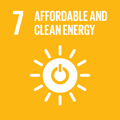- Docente: Marco Lorenzini
- Credits: 6
- SSD: ING-IND/10
- Language: Italian
- Teaching Mode: Traditional lectures
- Campus: Forli
- Corso: First cycle degree programme (L) in Mechanical Engineering (cod. 0949)
Learning outcomes
By the end of the course the student has acquired the basics of
fluid dynamics and heat transfer and is able to apply analytical
and numerical techniques to solve issues of interest in Mechanical
Engineering.
Course contents
Notice: the English version of the course is sketchy because it will be held in Italian anyway, so the following is only aimed at giving a potential foreign student a general impression of the course prior to choosing whether to enlist for the Italian degree in 'Ingegneria Meccanica'. For further details, please e-mail the instructor.
Introduction. Summary of Thermodynamics. Introduction to the modes of heat transfer. Conduction, the basics. One-dimensional, steady-state conduction. Two-dimensional, steady-state conduction. Transient conduction. Convection, the basics. External flows. Internal flows. Free convection. Boiling and condensation. Heat exchangers. Radiation: mechanisms and properties. Radiation: exchange between surfaces. Basics of mass transport.
Readings/Bibliography
Material supplied by the lecturer.
Fondamenti di trasmissione del caloredi Gianni Comini , Giovanni Cortella edizioni S.G.E., 2013
Incropera, DeWitt, Bergman, Lavine Principles of Heat and Mass
Transfer, 7th Ed. International Student Version. Wiley 2011.
Further references:
Guglielmini - Pisoni - Introduzione alla trasmissione del calore -
Casa Editirice Ambrosiana 2002.
Guglielmini - Pisoni - Elementi di trasmissione del calore -
Casa Editirice Ambrosiana 1996.
Teaching methods
Examples and practical demonstrations to exemplify theory; use of
charts and diagrams as needed to compute relevant quantities.
Assessment methods
Written test to access the oral part. The written test consists of three exercises on the three main parts of the program (Thernodynamics, Fluid Mechanics, Heat Transfer), with a maximum of 36 points; 18 points are needed to be allowed to the oral examination. The oral examination takes part next to the communication of the outcomes of the written tests and consists of two questions on the subjects treated in the course. A wide selection of past written tests complete with their solution is available at: http://campus.unibo.it/
Teaching tools
Classroom exercises and experiments.
Office hours
See the website of Marco Lorenzini
SDGs

This teaching activity contributes to the achievement of the Sustainable Development Goals of the UN 2030 Agenda.
